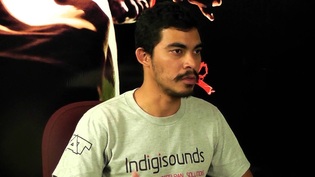 Written by Ted Goslin
Written by Ted Goslin
In an era that has seen technology explode into a new world of possibility with smartphones, tablets, and device interconnectivity, the one thing that has yet to make a giant splash in the main stream of global culture is the digitization of the Steelpan sound. Until now.
Indigisounds has revolutionized the way the Pan is heard, by creating a realistic-sounding digital version of all steelpan instruments.
David A. Chow is the owner and creator of Indigisounds and holds a B.Sc in Electrical Engineering from the University of the West Indies (UWI). On completing his studies in 2010 he went on to work with the UWI Steelpan Initiative as he showed a great passion for the area of acoustics. Being a percussion and steelpan enthusiast, his work with this initiative led to the creation of the PHI (Percussive Harmonic Instrument). During this period he dealt extensively with the sampling of steelpan as well as dealing with sound generation.
1. What is Indigisounds and what is your role with the company?
Indigisounds Ltd. is a software sampling company that wishes to capture the authentic sounds from indigenous music instruments from the caribbean and place it into a format for music producers, composers and enthusiasts to enjoy within the comfort of their studio setup. My role is to provide the technical services of the workings for the company.
2. What is the main purpose of the company?
The main purpose is to get as an authentic sound of the caribbean into the global music producing hands.
3. What big picture role do you see Indigisounds playing in the global steepan landscape? What kinds of applications is it potentially capable of in the big picture of music?
Just as they are high quality violins, guitars and pianos sampled, we wish to do the same for the steelpan. This will enable someone who cannot play any steelpan, but able to fuse it into whatever production he/she wishes to do.
4. How is the company fairing financially and where do you see it going in the next five years?
We are fresh out of school and still learning the market, however, we are growing from strength to strength. Five years is too far a prediction to give, but the small steps we are taking has certainly helped us fund most of our R&D. We try to keep the overheads as low as possible. Outside of the steelpan community, we have discovered that the steelpan internationally is still considered a novelty item, especially since most people think the acoustic version sounds exactly like what is on the Casio or Yamaha keyboards. However, we spend most of our time showing people what it is and supposed to sound like.
5. How are players using the technology so far?
Most use it for music productions. A few for composing and transcribing. Recently we were fortunate to have the samples being a major feature for Bunji Garlin’s recent soca release for 2015 Trinidad and Tobago carnival titled “Renegade.” This was produced by a UK group called Jus Now, who have been one of our most avid users.
6. Where do you see the digital realm of Pan going? What are some of the obvious pros and cons you see with the concept given the trouble of getting Pan to be more recognized globally as a real instrument rather than a novelty? How can it help with that?
The digital realm for Pan is coming to its own strength slowly but surely. Most digital products out there has some level of novelty, which target the consumer market. We are going one step in placing the pan onto the MIDI domain, which is more conducive to the professional market. However, we are not here to replace the instrument. A steelpan player’s touch is something that can’t be digitally captured. Hopefully having the steelpan in this domain will give the instrument even more recognition globally.









